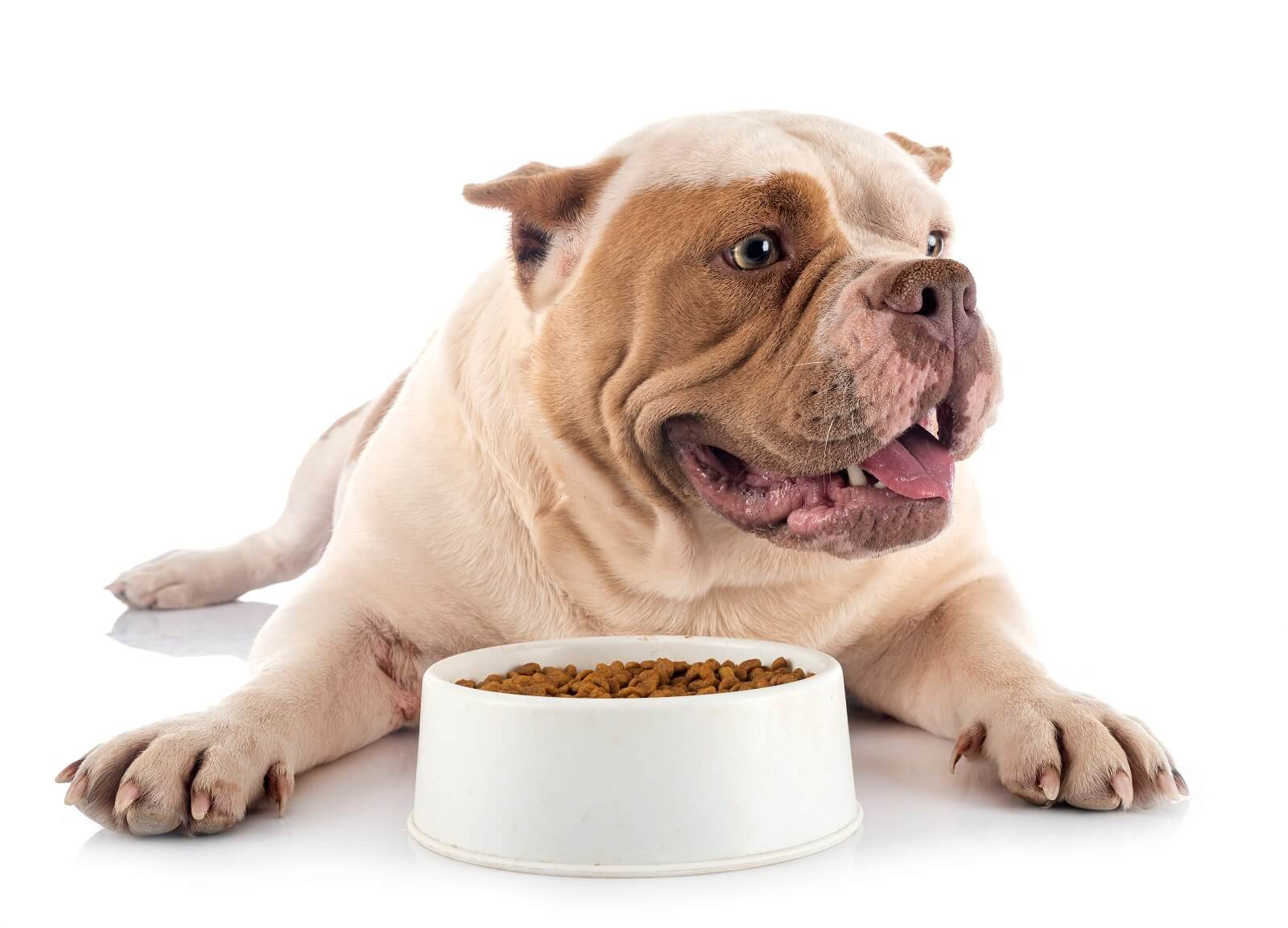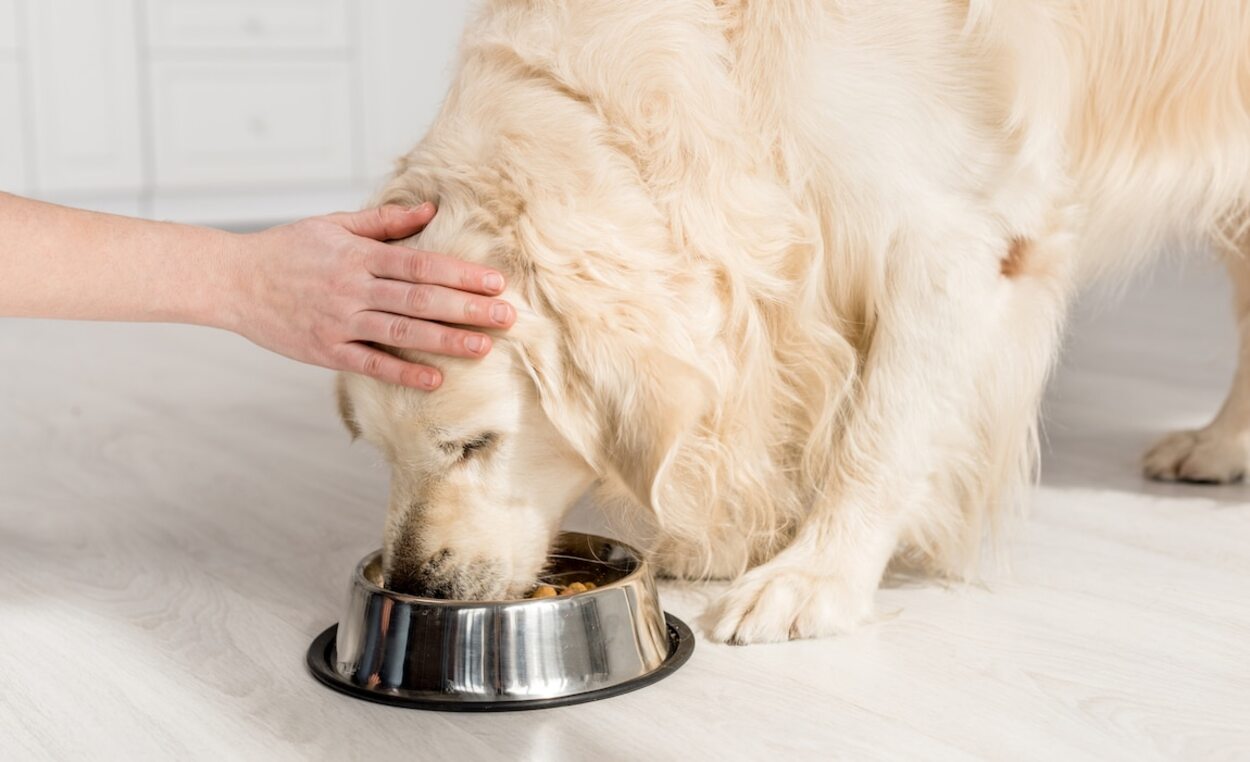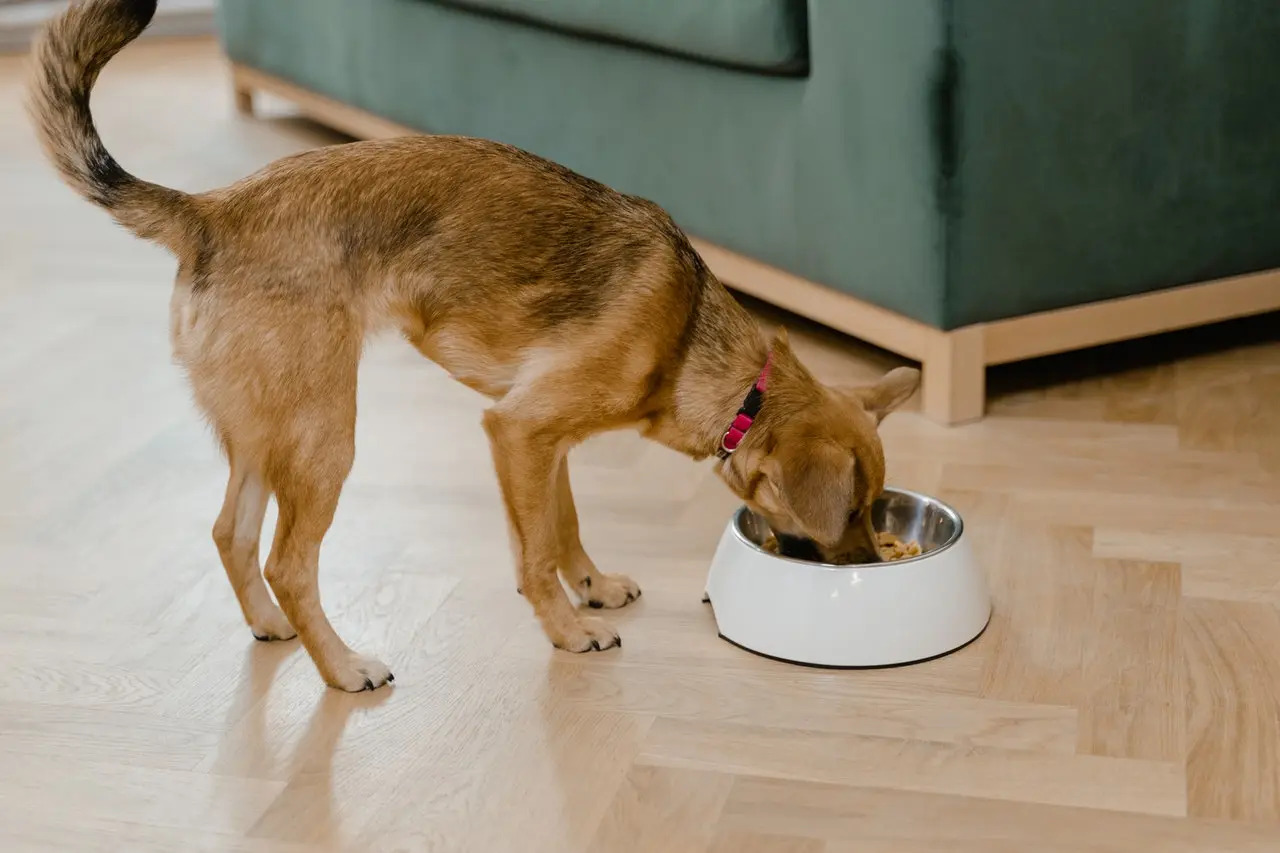Home>Health & Wellness>Nutrition & Diet>How To Implement An Elimination Diet For Your Dog


Nutrition & Diet
How To Implement An Elimination Diet For Your Dog
Modified: February 21, 2024
Learn how to implement an elimination diet for your dog to improve their nutrition and diet. Discover the steps to identify and eliminate potential food allergens.
(Many of the links in this article redirect to a specific reviewed product. Your purchase of these products through affiliate links helps to generate commission for Pawsomeoldies.com, at no extra cost. Learn more)
Table of Contents
Introduction
Implementing an elimination diet for your dog can be a crucial step in identifying and addressing potential food allergies or sensitivities. Just like humans, dogs can experience adverse reactions to certain ingredients in their food, leading to a range of symptoms such as itching, digestive issues, and skin problems. An elimination diet involves removing potential allergens from your dog's diet and reintroducing them systematically to pinpoint the specific triggers.
Understanding your dog's dietary needs and any potential food intolerances is essential for their overall well-being. By embarking on an elimination diet, you can gain valuable insights into your dog's unique nutritional requirements and promote their long-term health and happiness.
In the following sections, we will delve into the intricacies of implementing an elimination diet for your dog, from the initial consultation with a veterinarian to the careful selection of suitable foods and the monitoring of your dog's progress. With the right approach and dedication, you can effectively identify and manage your dog's food sensitivities, ultimately enhancing their quality of life.
Understanding the Elimination Diet
The elimination diet is a systematic approach to identifying food allergies or sensitivities in dogs. It involves removing potential allergens from the dog's diet for a specific period, typically around 8 to 12 weeks. During this time, the dog is fed a novel or hydrolyzed protein diet, which contains proteins and carbohydrates that the dog has not been previously exposed to. This process aims to alleviate the symptoms caused by food sensitivities and provide a clean slate for reintroducing potential allergens later on.
Food allergies in dogs can manifest in various ways, including itching, skin rashes, ear infections, gastrointestinal disturbances, and even behavioral changes. By understanding the elimination diet, dog owners can take proactive measures to address these issues and improve their pet's quality of life.
The elimination diet works on the principle of exclusion. By eliminating potential allergens from the dog's diet, it becomes possible to observe any positive changes in their health and behavior. This process helps in pinpointing specific ingredients that may be triggering allergic reactions in the dog.
It's important to note that the elimination diet should be strictly followed, and no other foods or treats should be given to the dog during this period. Any deviation from the prescribed diet can compromise the accuracy of the results and prolong the process of identifying the allergens.
Understanding the elimination diet also involves recognizing the commitment and patience required. It may take time to see noticeable improvements in the dog's condition, and the reintroduction phase must be approached with caution and diligence. Additionally, close observation of the dog's symptoms and behavior is crucial throughout the entire process.
In essence, understanding the elimination diet empowers dog owners to take a proactive approach to their pet's health. By identifying and eliminating potential allergens, it becomes possible to create a tailored diet that supports the dog's well-being and minimizes the risk of allergic reactions. This foundational knowledge sets the stage for successfully implementing an elimination diet for dogs and ultimately promoting their long-term health and happiness.
Consulting with a Veterinarian
Consulting with a veterinarian is the pivotal first step in embarking on an elimination diet journey for your dog. Veterinarians play a crucial role in guiding dog owners through the intricate process of identifying and managing food allergies or sensitivities in their pets. Their expertise and insights are invaluable in ensuring the success of the elimination diet and the overall well-being of the dog.
When considering an elimination diet for your dog, scheduling a consultation with a trusted veterinarian is essential. During this consultation, the veterinarian will conduct a comprehensive assessment of your dog's health history, including any previous instances of allergies or dietary issues. This thorough evaluation provides vital context for devising an effective elimination diet plan tailored to your dog's specific needs.
Furthermore, the veterinarian will offer professional guidance on the duration and methodology of the elimination diet. They will outline the importance of adhering strictly to the prescribed diet and emphasize the significance of patience and consistency throughout the process. Additionally, the veterinarian may recommend diagnostic tests or examinations to rule out other potential health concerns and ensure that the elimination diet is the most suitable course of action for your dog.
Moreover, the veterinarian's expertise extends to the selection of an appropriate novel or hydrolyzed protein diet for the elimination phase. They will recommend specific commercial dog foods or provide guidance on preparing homemade meals that align with the dietary requirements of the elimination diet. This personalized approach takes into account your dog's nutritional needs and any existing health conditions, ensuring that the chosen diet supports their overall well-being.
In addition to providing guidance on the elimination phase, the veterinarian will also outline the crucial aspects of monitoring your dog's progress and the systematic reintroduction of foods in the subsequent phases. Their comprehensive support and professional insights serve as a cornerstone for the successful implementation of the elimination diet and the long-term management of your dog's dietary sensitivities.
In essence, consulting with a veterinarian sets the foundation for a well-informed and structured approach to implementing an elimination diet for your dog. Their expertise, personalized recommendations, and ongoing support are instrumental in navigating this process with confidence and ensuring the best possible outcomes for your dog's health and happiness.
Selecting the Right Food for the Elimination Diet
Selecting the right food for the elimination diet is a critical aspect of the entire process. The primary goal is to choose a novel or hydrolyzed protein diet that effectively eliminates potential allergens while providing essential nutrients for your dog's well-being. This careful selection sets the stage for accurately identifying and managing your dog's food sensitivities.
When considering the appropriate food for the elimination diet, it's essential to prioritize options that contain proteins and carbohydrates your dog has not been previously exposed to. Novel protein sources such as venison, duck, or kangaroo, and uncommon carbohydrate sources like sweet potatoes or quinoa are often recommended. These ingredients are less likely to trigger allergic reactions, making them suitable for the elimination phase.
Hydrolyzed protein diets, where the protein molecules are broken down into smaller components, are another viable option. These diets are designed to be hypoallergenic, reducing the likelihood of provoking allergic responses in sensitive dogs. Commercial hydrolyzed protein dog foods are readily available and offer a convenient solution for implementing the elimination diet.
When selecting a commercial diet for the elimination phase, it's crucial to scrutinize the ingredient list and opt for products with minimal additives, fillers, and potential allergens. Additionally, consulting with your veterinarian is paramount in identifying the most suitable food options based on your dog's specific dietary requirements and any existing health considerations.
For dog owners who prefer preparing homemade meals, seeking guidance from a veterinarian or a veterinary nutritionist is recommended. They can provide insights into formulating balanced and nutritionally complete novel protein diets that align with the principles of the elimination diet. This personalized approach ensures that the homemade meals cater to your dog's unique nutritional needs while excluding potential allergens.
Furthermore, it's important to maintain strict adherence to the chosen diet throughout the elimination phase. Any deviations, including treats, flavored medications, or table scraps, can compromise the accuracy of the results and prolong the process of identifying the allergens. Consistency and diligence in selecting and administering the right food are fundamental to the success of the elimination diet.
In essence, selecting the right food for the elimination diet demands careful consideration, thorough research, and professional guidance. By prioritizing novel or hydrolyzed protein sources and maintaining strict adherence to the prescribed diet, dog owners can lay a solid foundation for effectively identifying and managing their dog's food sensitivities, ultimately promoting their long-term health and well-being.
Implementing the Elimination Diet
Implementing the elimination diet for your dog requires a steadfast commitment to the prescribed dietary plan and a keen focus on observing any changes in your pet's health and behavior. Once the appropriate novel or hydrolyzed protein diet has been selected in consultation with a veterinarian, the next crucial step is to initiate the elimination phase.
During this phase, it is imperative to strictly adhere to the chosen diet and eliminate all other food sources, including treats and flavored medications. Any deviation from the prescribed diet can compromise the accuracy of the results and prolong the process of identifying the allergens. Consistency and diligence in implementing the elimination diet are paramount to its success.
Transitioning your dog to the new diet should be done gradually to minimize digestive upset. Slowly introduce the novel or hydrolyzed protein food while phasing out their previous diet over a period of 7-10 days. This gradual transition allows your dog's digestive system to adapt to the new food and reduces the likelihood of gastrointestinal disturbances.
Throughout the elimination phase, close observation of your dog's symptoms and behavior is essential. Keep a detailed journal to track any changes, including improvements in skin condition, reduction in itching, or alleviation of gastrointestinal issues. This meticulous record-keeping provides valuable insights into the effectiveness of the elimination diet and serves as a reference point for future assessments.
Consistency and patience are key during this phase, as it may take time to observe noticeable improvements in your dog's condition. It is important to remain dedicated to the prescribed diet and resist the temptation to introduce any other foods or treats that could compromise the accuracy of the results.
Moreover, maintaining a supportive and nurturing environment for your dog during the elimination phase can contribute to their overall well-being. Providing ample opportunities for exercise, mental stimulation, and affectionate interactions can help alleviate any potential stress or discomfort associated with the dietary changes.
By implementing the elimination diet with unwavering dedication and attentiveness, dog owners can lay the groundwork for effectively identifying and managing their pet's food sensitivities. This proactive approach sets the stage for the subsequent phases of the elimination diet, including the systematic reintroduction of foods, and ultimately supports the long-term health and happiness of their beloved canine companion.
Monitoring Your Dog's Progress
Monitoring your dog's progress during the elimination diet is a crucial aspect of the entire process. It involves keen observation, meticulous record-keeping, and a deep understanding of your dog's behavior and health indicators. By closely monitoring your dog's response to the prescribed diet, you can gather valuable insights that will inform the subsequent phases of the elimination diet and contribute to the overall well-being of your pet.
One of the primary methods of monitoring your dog's progress is through diligent record-keeping. Maintaining a detailed journal allows you to track any changes in your dog's symptoms and behavior. This includes noting improvements in skin condition, reduction in itching, alleviation of gastrointestinal issues, and any other observable changes. By documenting these developments, you create a comprehensive record that serves as a reference point for evaluating the effectiveness of the elimination diet.
In addition to physical symptoms, it's essential to pay attention to your dog's overall demeanor and energy levels. Positive changes in mood, increased vitality, and a general sense of well-being can indicate the effectiveness of the prescribed diet. Conversely, persistent lethargy, irritability, or signs of discomfort may warrant further assessment and adjustments to the elimination diet under the guidance of a veterinarian.
Regular communication with your veterinarian is instrumental in monitoring your dog's progress. Scheduled check-ins allow you to provide updates on your dog's response to the elimination diet and receive professional insights and guidance. Veterinarians can offer valuable interpretations of your dog's progress based on their expertise, potentially identifying subtle indicators that may not be immediately apparent to the untrained eye.
Furthermore, maintaining open and transparent communication with your veterinarian enables you to address any concerns or challenges that may arise during the elimination phase. Whether it's seeking clarification on dietary guidelines, discussing observed changes in your dog's health, or seeking emotional support as a pet owner, the veterinarian serves as a trusted partner in navigating the complexities of the elimination diet.
As you diligently monitor your dog's progress, it's important to approach the process with patience and a proactive mindset. Not all improvements may be immediately evident, and some dogs may require more time to exhibit noticeable changes in response to the elimination diet. By maintaining a consistent and attentive approach to monitoring your dog's progress, you lay the groundwork for informed decision-making and the successful management of your pet's dietary sensitivities.
In essence, monitoring your dog's progress during the elimination diet is a multifaceted endeavor that encompasses attentive observation, detailed record-keeping, regular communication with your veterinarian, and a deep commitment to your dog's well-being. By embracing this proactive approach, you empower yourself to make informed decisions and provide the best possible care for your beloved canine companion.
Reintroducing Foods
After the completion of the elimination phase and careful monitoring of your dog's progress, the next pivotal stage in the elimination diet process is the systematic reintroduction of foods. This phase is a delicate yet essential step in identifying specific allergens and determining your dog's tolerance to various ingredients. The reintroduction process should be approached with patience, precision, and under the guidance of a veterinarian to ensure the accurate identification of dietary triggers.
The reintroduction of foods involves gradually introducing one potential allergen at a time while closely monitoring your dog's response. It is crucial to select the first reintroduced food based on the likelihood of it being a common allergen for dogs. Common allergens in dog food include beef, chicken, dairy, wheat, and soy. By reintroducing these ingredients one by one, you can systematically assess your dog's reaction and pinpoint any adverse responses.
The reintroduction process typically spans several weeks, with each reintroduced food being administered for a specific duration before moving on to the next ingredient. During this period, vigilant observation of your dog's symptoms and behavior is paramount. Any signs of allergic reactions, such as itching, digestive disturbances, or changes in skin condition, should be meticulously documented and reported to your veterinarian.
Clear communication with your veterinarian is essential throughout the reintroduction phase. Regular check-ins and updates allow the veterinarian to interpret your dog's responses and provide informed guidance on the next steps. Based on the observed reactions, the veterinarian may recommend adjustments to the diet or further diagnostic measures to confirm specific allergens.
The reintroduction phase serves as a critical diagnostic tool, enabling you and your veterinarian to identify the precise dietary triggers that may be causing allergic reactions in your dog. By systematically reintroducing potential allergens and closely monitoring your dog's responses, you can gain valuable insights that inform the formulation of a tailored, allergen-free diet that supports your dog's long-term health and well-being.
In essence, the reintroduction of foods is a meticulous and methodical process that plays a pivotal role in the successful management of your dog's dietary sensitivities. By approaching this phase with diligence, patience, and professional guidance, you can effectively identify specific allergens and create a customized diet that promotes your dog's optimal health and quality of life.
Conclusion
Embarking on an elimination diet journey for your dog is a proactive and empowering step toward identifying and managing potential food allergies or sensitivities. Throughout this comprehensive process, which encompasses understanding the elimination diet, consulting with a veterinarian, selecting the right food, implementing the diet, monitoring your dog's progress, and systematically reintroducing foods, you play a pivotal role in safeguarding your dog's health and well-being.
By gaining a deep understanding of the elimination diet, you equip yourself with the knowledge and insights necessary to navigate this intricate journey with confidence and dedication. Recognizing the principles of exclusion, the importance of adherence to the prescribed diet, and the patience required for observing tangible improvements in your dog's condition lays a solid foundation for the successful implementation of the elimination diet.
Consulting with a veterinarian serves as a cornerstone of this process, providing professional guidance, personalized recommendations, and ongoing support. The expertise and insights offered by veterinarians are instrumental in devising an effective elimination diet plan tailored to your dog's specific needs, ensuring that the chosen diet supports their overall well-being.
The careful selection of the right food for the elimination diet, whether it be a novel or hydrolyzed protein diet, sets the stage for accurately identifying and managing your dog's food sensitivities. Prioritizing novel protein sources and maintaining strict adherence to the prescribed diet are fundamental to the success of the elimination phase.
Implementing the elimination diet demands unwavering dedication and attentiveness, as well as a nurturing environment that supports your dog's overall well-being. By approaching this phase with patience and consistency, you pave the way for effectively identifying and managing your pet's food sensitivities.
Monitoring your dog's progress throughout the elimination diet is a multifaceted endeavor that encompasses attentive observation, meticulous record-keeping, and regular communication with your veterinarian. This proactive approach empowers you to make informed decisions and provide the best possible care for your beloved canine companion.
The systematic reintroduction of foods marks a critical phase in the elimination diet process, enabling the accurate identification of dietary triggers and the formulation of a tailored, allergen-free diet that supports your dog's long-term health and well-being.
In conclusion, by embracing the complexities of the elimination diet and approaching each phase with diligence, patience, and professional guidance, you pave the way for effectively identifying and managing your dog's dietary sensitivities. This proactive approach not only enhances your dog's quality of life but also strengthens the bond between you and your beloved pet, fostering a future of health and happiness.














